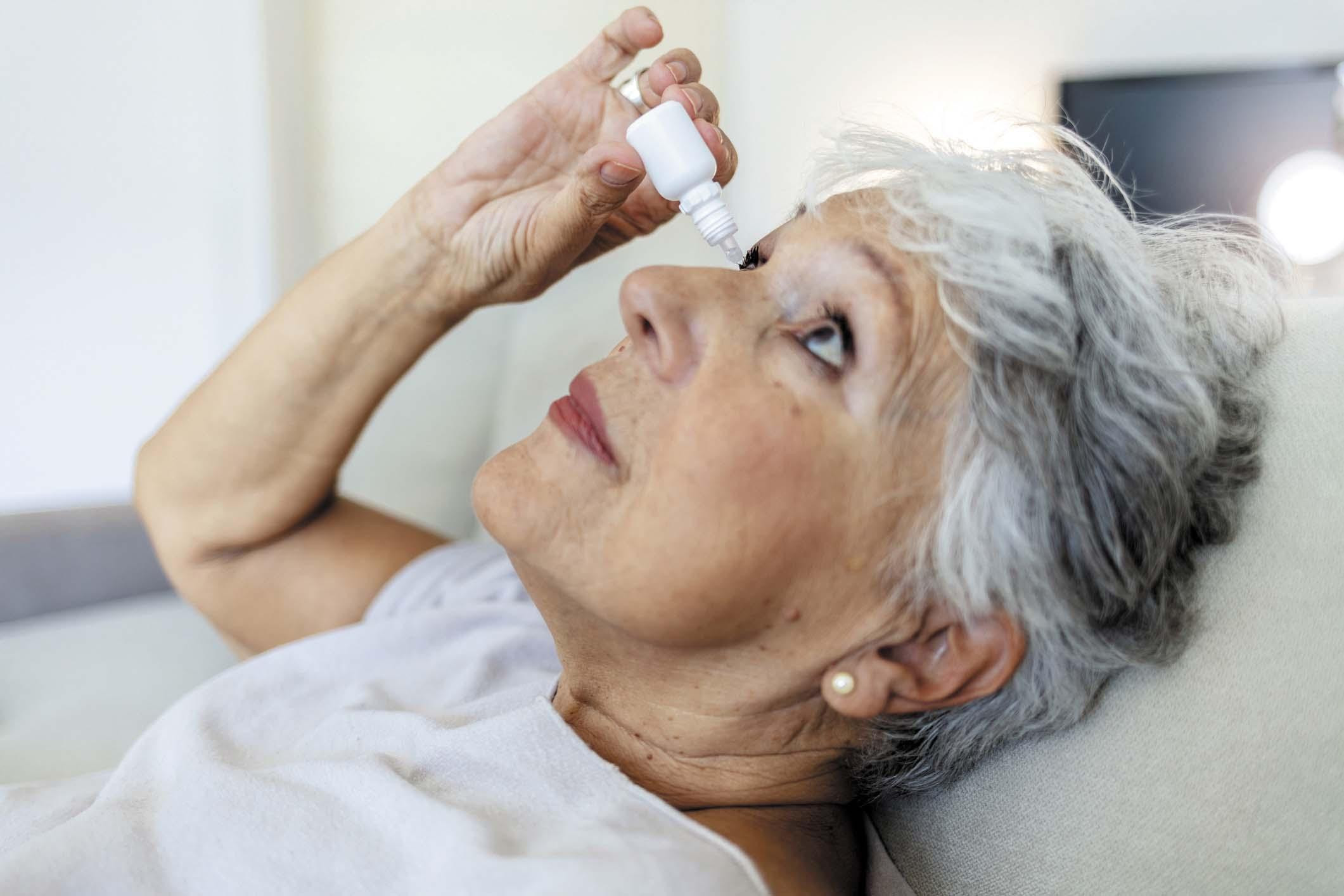Can eye drops restore your close-up vision?
Some people might be able to ditch their reading specs with new prescription eye medications.
- Reviewed by Anthony L. Komaroff, MD, Editor in Chief, Harvard Health Letter; Editorial Advisory Board Member, Harvard Health Publishing

Reading, sewing, looking at your smartphone — these activities and others become challenging when your close-up vision declines in middle age. The condition, called presbyopia, happens to all of us, and it’s easily resolved by wearing over-the-counter reading glasses or prescription eyeglasses or contact lenses.
Now another option — prescription eye drops — are available to help you improve blurry close-up vision. Here’s what you need to know about presbyopia and the new medications.
Why we lose close-up vision
Our ability to focus on objects near or far away is a function of the eye’s lens. The lens is soft and flexible, which allows it to change shape and bend light in certain ways onto the retina — the tissue in the back of the eye that sends light signals to the brain.
As we age, the lens becomes less flexible. “Past age 45, the lens gets stiffer and then can’t change its shape to accommodate targets near the eye. The result is that you can’t see things up close clearly,” says Dr. Matthew Gardiner, an ophthalmologist and associate chief of clinical affairs at Harvard-affiliated Massachusetts Eye and Ear.
Eye drops for close-up vision
The FDA has recently approved several prescription eye medications that help relieve presbyopia temporarily. The eye drops include pilocarpine hydrochloride (Vuity, Qlosi) and aceclidine (VIZZ).
The drugs get around the problem of a stiff eye lens by stimulating other parts of the eye to help focus light more clearly. “The eye drops make the iris sphincter muscle tighten, so that the pupil in the center of the eye shrinks, allowing less light in. This is called the pinhole effect. It’s like squinting,” Dr. Gardiner says.
Using the eye drops
The eye drops have a flexible dosing schedule. You can use them daily or whenever you feel like going glasses-free. “It’s purely for convenience,” Dr. Gardiner says. “You might use them for a number of days in a row and then go back to your glasses, or just use the eye drops on special occasions. There’s no problem switching back and forth.”
Pilocarpine eye drops are applied once or twice a day and last up to eight hours, depending on the product the doctor prescribes. Aceclidine drops are applied just once a day and last for about 10 hours.
It takes about 30 minutes for the eye drops to take effect.
What’s the catch?
Like any medication, presbyopia eye drops have potential side effects. They can include blurred vision, headache, and dim vision. “Because the pupil gets smaller and not as much light enters the eyes, things might seem dimmer or darker,” Dr. Gardiner says. “So in a very dark environment, such as driving at night, you might have more difficulty navigating.”
In rare cases, people taking pilocarpine have had a retinal tear or detachment, which can lead to blindness. No retinal tears or detachments were reported in studies (as yet unpublished) of the aceclidine eye drops for presbyopia. However, the medication’s label warns of that risk.
Considerations
The eye drops to improve close-up vision aren’t for everyone. Dr. Gardiner says you might want to pass on them if you have a strong family history of retinal detachment, if you’re very nearsighted, or if you have an inflamed iris (a condition called iritis).
Something else to think about is the cost. The eye drops are considered cosmetic and are not covered by insurance. Prices are as much as $80 for a one-month supply.
But if you want the convenience, and if your budget allows, you might consider trying the eye drops. “They won’t restore your near vision permanently,” Dr. Gardiner says, “but they can decrease your dependence on reading glasses while you’re taking these medications.”
Image: © Kannika Paison/Getty Images
About the Author

Heidi Godman, Executive Editor, Harvard Health Letter
About the Reviewer

Anthony L. Komaroff, MD, Editor in Chief, Harvard Health Letter; Editorial Advisory Board Member, Harvard Health Publishing
Disclaimer:
As a service to our readers, Harvard Health Publishing provides access to our library of archived content. Please note the date of last review or update on all articles.
No content on this site, regardless of date, should ever be used as a substitute for direct medical advice from your doctor or other qualified clinician.
















